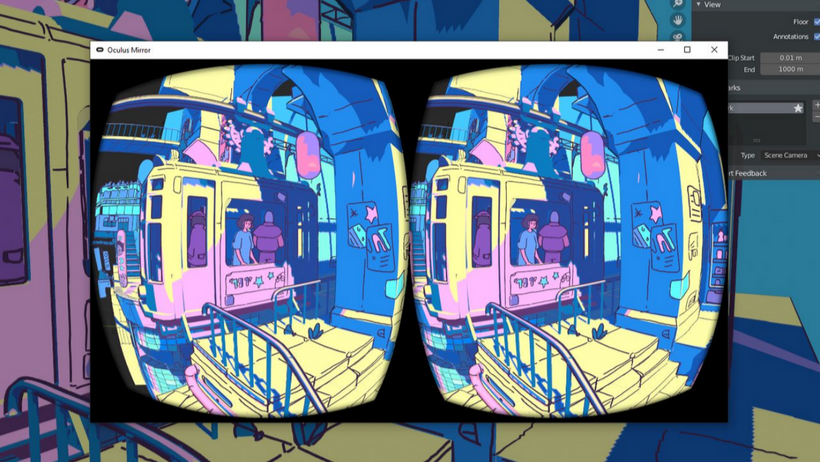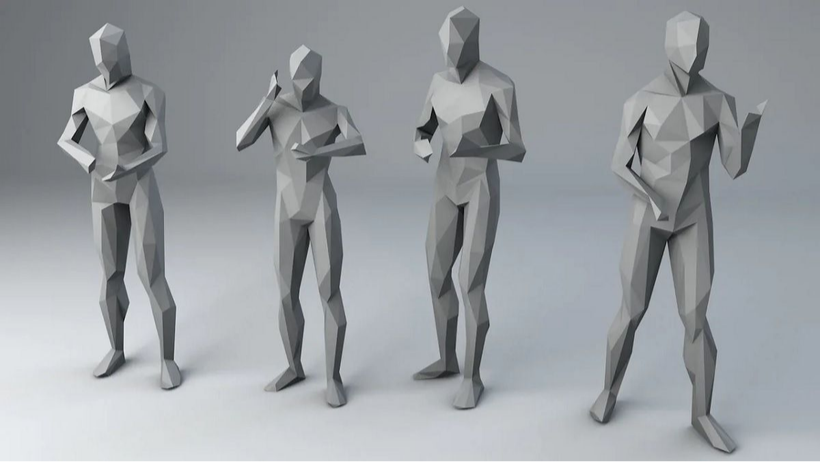The world of 3D modeling has evolved significantly over the years. With the advent of virtual reality (VR), Blender in VR offers a new frontier for immersive design, allowing artists to work in a 3D space like never before. This article delves into the integration of VR in Blender, how it enhances the modeling process, and the exciting possibilities this new technology offers for creators and designers.
What is VR in Blender?
VR in Blender refers to the integration of virtual reality technology into Blender, a popular open-source 3D creation suite. By using VR headsets, designers can step into their models, sculpt, and manipulate 3D objects in real time. Unlike traditional modeling on a 2D screen, Blender in VR enables artists to interact with their creations directly in a 3D space, creating a more intuitive and immersive experience.
This integration brings the process of 3D modeling into the realm of real-world interaction. Rather than relying solely on a mouse or stylus, users can physically move around and adjust models from different angles in virtual space. This dynamic process provides designers with a sense of depth and scale that simply isn’t possible on a flat screen.

The Evolution of 3D Modeling

3D modeling has traditionally been a 2D process where users interact with objects through a screen and input devices like a mouse or tablet. While tools like Blender have made tremendous strides in offering intuitive workflows, the experience of working within a 3D space has always been somewhat limited by the 2D nature of the screen.
With the rise of VR in Blender, this limitation is broken down. Now, designers can enter their models as if they are part of the world they’re creating. This shift in how we interact with 3D spaces is revolutionary, offering a hands-on approach to design that feels closer to working in the real world.
How VR in Blender Enhances the 3D Modeling Process
1. Immersive Design
The most significant advantage of Blender in VR is the immersive environment it offers. Artists can feel as though they’re stepping into the models they create, which leads to better understanding of scale, proportions, and depth. Working in VR allows you to view your designs from any angle, in real time, and with the ability to walk around them.
With VR, you can zoom in on intricate details, change perspectives, and adjust elements with more precision. It’s akin to sculpting a physical model, but with the added benefit of digital precision and flexibility. You can even interact with the object as though you’re physically manipulating it, which leads to more natural and intuitive modeling.
2. Real-Time Interaction
Another key benefit of VR in Blender is the ability to interact with your design in real-time. Traditional 3D modeling often requires switching between views, adjusting parameters, and using external tools to manipulate objects. However, in a VR environment, the process becomes fluid. You can use hand gestures or controllers to scale, rotate, and position your models instantly.
This fluid interaction speeds up the design process and allows for a more dynamic workflow. When you can directly manipulate objects in 3D space, you spend less time thinking about how to adjust them and more time refining the creative aspects.
3. Enhanced Creativity
Being inside your 3D model opens up new creative possibilities. With Blender in VR, you can design and visualize objects from the inside out. For example, if you’re creating an architectural model, VR allows you to explore the building’s interior in real-time. You can feel the space you are designing, adjust the layout, and even test the lighting as if you were walking through it.
Additionally, VR facilitates the use of gestures for modeling, offering a more intuitive and tactile experience. Whether you’re sculpting or working on texture painting, VR gives you direct control over your models, allowing for more organic and creative designs.
The Tools Behind Blender in VR
Blender’s integration with VR technology has been made possible through several tools and add-ons. The most notable of these is the BlenderVR add-on, which allows users to connect their VR headsets to Blender. This add-on supports most VR devices, including the HTC Vive, Oculus Rift, and Valve Index, among others.
Once the BlenderVR add-on is enabled, users can begin interacting with Blender’s interface in a 3D space. The add-on provides several VR-specific tools, including object manipulation, navigation through the workspace, and even VR sculpting brushes.
In addition to BlenderVR, there are other VR tools that have been developed for specific tasks within the modeling process. For instance, VR sculpting tools allow users to build models using hand gestures, while VR painting tools let users directly paint textures onto their models in real-time. These tools create an incredibly immersive and intuitive modeling experience.
Applications of Blender in VR for Different Industries
The integration of VR in Blender has wide-reaching applications across various industries. Here are just a few examples of how this technology is being used:
1. Game Development
For game developers, Blender in VR is a game-changer. The ability to create 3D models and interact with them in real-time helps developers design immersive environments. Designers can walk through game worlds, test characters, and adjust environmental elements with ease, all within the VR environment.
This ability not only speeds up the development process but also ensures that designers can create environments that feel real, as they are experiencing them in 3D space during the design phase.
2. Architecture and Interior Design
Architects and interior designers benefit from Blender in VR by being able to step inside their models before they are built. With VR, they can explore buildings and spaces in real-time, test different layouts, and make decisions on design elements as they see the space from every angle.
This approach improves decision-making and helps identify issues with the design before construction even begins. Additionally, clients can experience walkthroughs of designs, giving them a realistic preview of what the final space will look like.
3. Product Design
In product design, VR allows designers to visualize and refine their products at scale. Whether it’s a piece of consumer electronics or a complex mechanical part, designers can manipulate the product in real-time, viewing it from every angle and making adjustments based on physical feedback.
By experiencing their designs in VR, product designers can make informed decisions about ergonomics, functionality, and aesthetics long before they create physical prototypes.
The Future of VR in Blender
The future of VR in Blender looks incredibly promising. As VR technology continues to advance, the tools and features available to Blender in VR users will only get better. Already, we are seeing improvements in the VR sculpting and painting tools, making the process even more natural and efficient.
Moreover, we can expect more collaborative features to emerge, allowing multiple designers to work in the same virtual space. This would facilitate real-time teamwork and allow designers to communicate and iterate on their designs as if they were physically in the same room.
>>> Read more: Rigging Animation Blender: A Step-by-Step Tutorial
3S Cloud Render Farm: Optimizing Your VR in Blender Workflow
When working on VR-based projects in Blender, rendering can be a time-consuming task. That’s where 3S Cloud Render Farm comes in. We offer powerful rendering solutions that can handle the demanding computational needs of Blender in VR projects.
Our cloud-based rendering services are designed to speed up your workflow, so you can focus on creativity instead of waiting for renders to finish. With scalable resources and high-quality output, 3S Cloud Render Farm helps you render your 3D animation and VR in Blender projects faster and more efficiently.
Conclusion
Blender in VR is opening new possibilities for 3D modeling and design. By offering a fully immersive and interactive experience, it allows artists to step inside their creations and manipulate them in ways that were once impossible. Whether you’re designing for games, architecture, or product development, VR in Blender provides an intuitive and efficient workflow that enhances creativity and productivity.
If you are working on VR in Blender projects, 3S Cloud Render Farm can help optimize your workflow with our fast and reliable rendering services. With us, you can bring your immersive designs to life without delay.